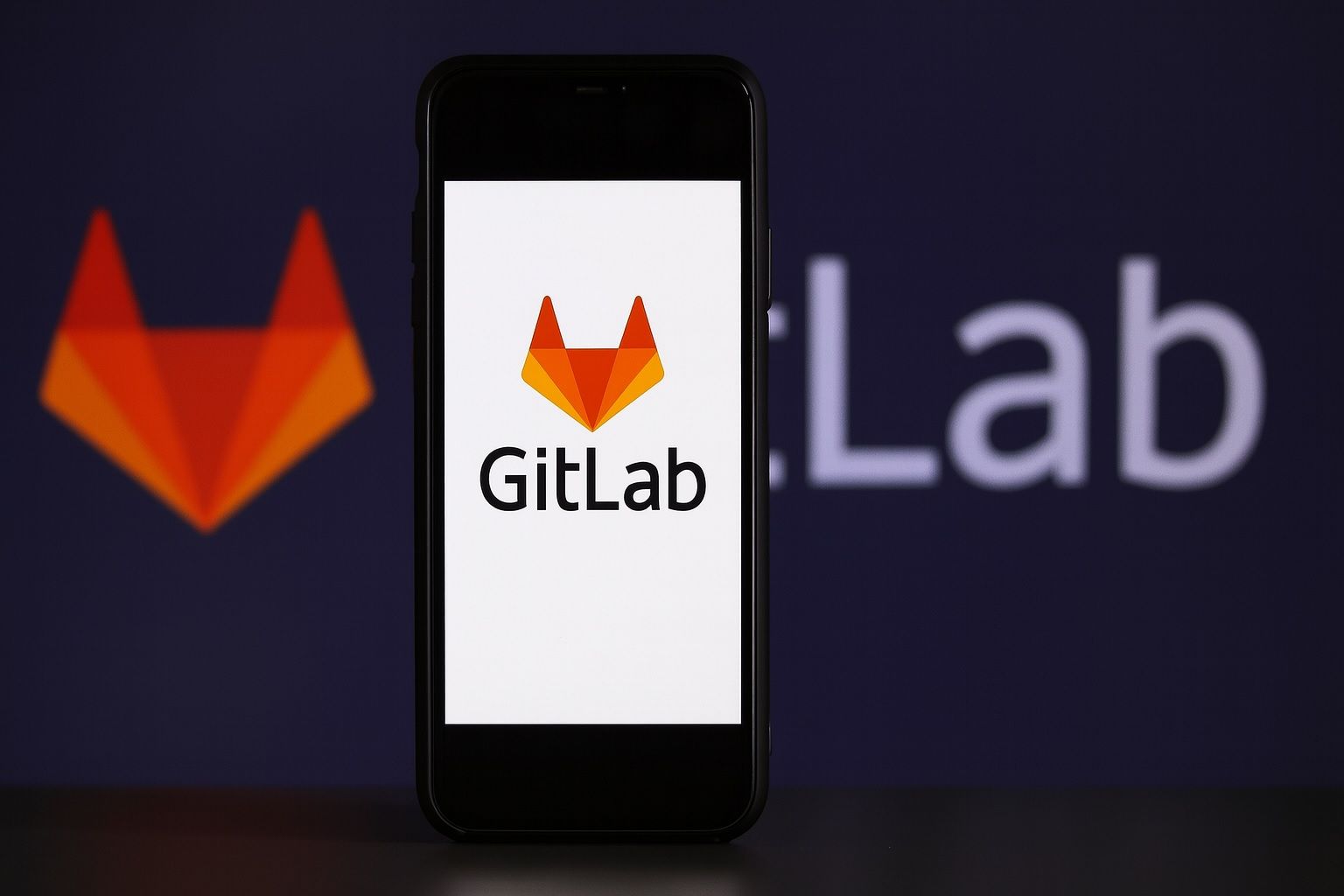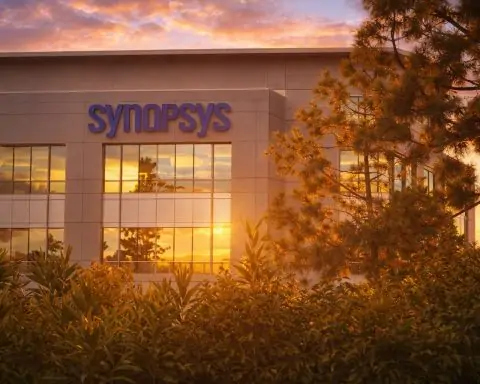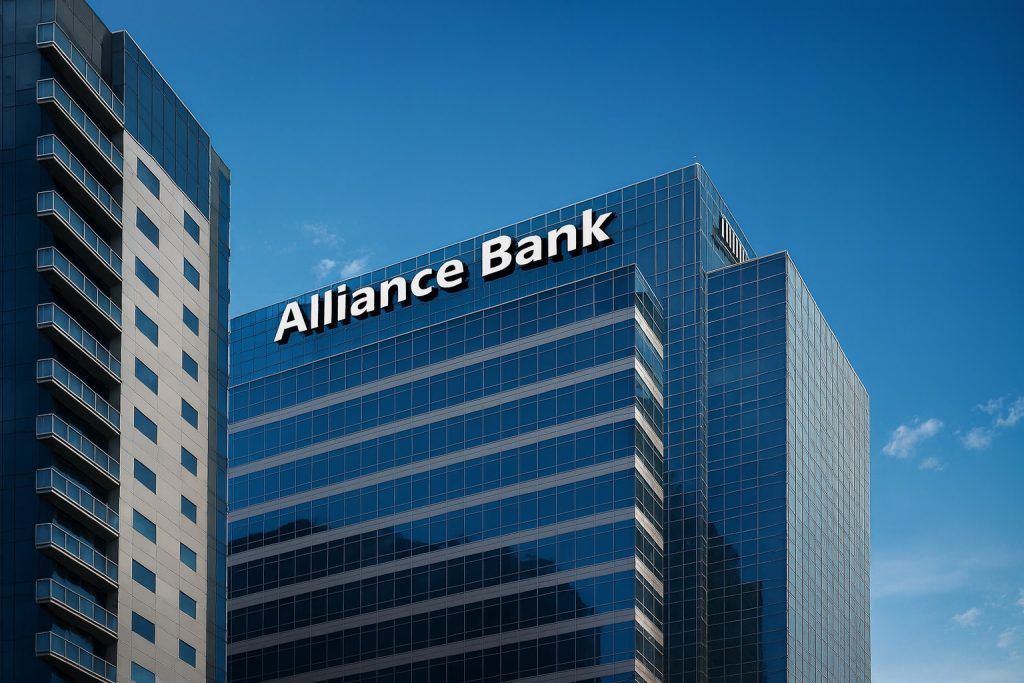- Takeover rumor ignites rally: GitLab (NASDAQ: GTLB) spiked ~11% on October 16, closing at $48.27, after reports that Datadog is exploring an acquisition at over $60 per share [1]. Trading volume hit ~19 million shares (~7× the usual level) as investors piled into GTLB on the buyout buzz [2].
- Rebound from recent slump: The takeover speculation snapped a two-week slide. GitLab shares had sunk to $43.65 by Oct. 15 amid broader tech volatility and jitters over last month’s earnings, where a CFO departure and cautious guidance spooked investors [3].
- Strong Q2 results, cautious outlook: In early September, GitLab reported Q2 FY2026 revenue of $236 million (+29% YoY) and adjusted EPS of $0.24 (beating estimates) [4]. However, it kept full-year sales guidance flat (~$937M) despite the beat [5]. Combined with news that CFO Brian Robins is leaving for Snowflake, management’s prudent stance triggered a ~7% stock drop on Sept. 4 [6].
- Analysts divided but mostly bullish: Bank of America reaffirmed a Buy rating (PT $72) and called the post-earnings dip a buying opportunity [7]. Overall, Wall Street maintains a Moderate Buy consensus with an average ~$60–61 price target (~20–30% upside) [8]. That said, Wells Fargo initiated coverage at Neutral ($50 PT), citing “uncertainty” around GitLab’s go-to-market changes and pricing pressures [9].
- AI arms race in DevOps: Rivals are also betting big on AI. Atlassian’s stock surged ~8% this week after a “game-changing” Jira AI integration [10], and Microsoft’s GitHub (not publicly traded) continues to invest in AI features like Copilot. AI-driven DevSecOps is emerging as the new battleground – and GitLab is viewed as an “AI play” in software development, heightening investor interest (and takeover appeal) [11].
- Product updates & partnerships: GitLab has doubled down on AI and cloud deals. It launched an AI coding assistant “GitLab Duo” and an advanced SAST security scanner to help developers find and fix code vulnerabilities faster [12]. The company also inked a three-year AWS partnership to expand its single-tenant GitLab Dedicated cloud offering for regulated industries [13] – moves aimed at keeping its DevOps platform competitive as enterprises demand more automation and security integration.
GitLab Shares Surge on Takeover Speculation
GitLab Inc.’s stock skyrocketed on October 16 following fresh buyout rumors. Shares jumped 10.6% intraday – from the mid-$40s to a $48.27 close – after a report that cloud-monitoring firm Datadog (DDOG) may be preparing a takeover bid [14]. The rumored offer, above $60 per share, represents a hefty premium. Traders leapt at the news: GTLB’s ~11% one-day gain far outpaced the broader market, and volume exploded to ~19 million shares (about seven times the usual daily average) [15].
The Datadog-GitLab chatter originated with a StreetInsider report and quickly spread on trading desks. According to Seeking Alpha, Datadog – a $30+ billion cloud software player – is working with Morgan Stanley bankers and considering an offer “for more than $60 a share” [16]. Notably, Datadog’s own stock fell ~5% on the rumor, reflecting investor concern about the potential cost, while GitLab’s stock spiked ~11% within minutes of the report. Neither company has commented, and there’s no certainty a deal will materialize [17].
This isn’t GitLab’s first whirl in the M&A rumor mill. Back in July 2024, Reuters reported GitLab was exploring a sale after attracting interest from multiple tech firms – with Datadog already named as a suitor [18]. That news also sent GitLab’s shares up ~11% before talks went quiet. Industry analysts have long seen GitLab as a likely acquisition target in DevOps. “GitLab has long been seen as a likely acquisition candidate,” Needham analyst Mike Cikos said during last year’s rumors, noting many expected a buyer like AWS or Google Cloud – though a Datadog tie-up “could make strategic sense” as well [19]. The revival of buyout chatter in 2025 suggests consolidation pressures remain strong in the software development tools space, especially as companies race to expand their AI-driven DevOps capabilities.
From Sell-Off to Rally: Recent Stock Performance
GitLab’s stunning rally comes on the heels of a volatile stretch for the stock. Just a day before the rumor, GTLB closed at $43.65 on Oct. 15, capping a multi-week slump [20]. In late September, shares traded above $50, but drifted into the mid-$40s as investors digested mixed signals from the company and a choppy broader market. The Nasdaq had been hitting record highs in early October, only to plunge ~3.6% on Oct. 10 amid a global tech sell-off [21]. GitLab was caught in that downdraft – sliding nearly 5% on Oct. 10 – and struggled to regain traction until the takeover buzz rejuvenated bullish sentiment [22].
Several company-specific events also weighed on GTLB before the M&A rumor. On September 4, the stock tumbled over 7% in one day [23] after an earnings release delivered a mix of good and worrisome news: strong quarterly results tempered by conservative forward guidance and a surprise C-suite change. Trading volume spiked above 16 million shares on that earnings drop – a sign of both disappointed holders selling and opportunistic buyers bottom-fishing [24]. From a post-earnings low around $43, GitLab did rebound into the high-$40s by mid-September, but volatility persisted [25]. By the start of this week, shares were back under pressure – closing at $44.19 on Oct. 13 and $43.65 on Oct. 15 [26] – before Thursday’s M&A-fueled relief rally erased those losses.
The Datadog news flipped sentiment overnight. In recent weeks, GitLab had flashed mounting warning signs (rising volume on down days, and technical “sell” signals in mid-October trading [27]). Short interest was relatively low and options positioning bullish (GTLB’s put/call ratio stood around 0.29 pre-rumor, indicating traders were heavily skewed to the upside) [28]. This setup meant the takeover rumor triggered a fear-of-missing-out buying spree, even forcing some skeptics to cover bearish bets [29]. By the Oct. 16 close, GitLab’s stock not only recouped its early-month decline but was among the market’s top gainers of the day [30]. Even after surging to ~$48, GTLB remains well below its 52-week high (~$74) and above its yearly low (~$38) [31], reflecting the stock’s rollercoaster ride this year.
Earnings Recap: High Growth vs. Cautious Guidance
Stepping back from the day-to-day swings, GitLab’s fundamentals present a blend of rapid growth and cautious management outlook. In its Q2 FY2026 results (for the quarter ended July 31, 2025), the company delivered robust numbers. Revenue jumped 29% year-over-year to $236.0 million, beating GitLab’s own guidance (~$226–227M) [32]. Top-line growth even ticked up slightly from the prior quarter, and profitability improved markedly: adjusted EPS came in at $0.24, a 60% jump from $0.15 a year ago and well above Wall Street’s ~$0.16 consensus [33]. Non-GAAP operating margin reached 17% (up from 10% YoY), and free cash flow turned positive ($46.5M vs. $10.8M negative a year ago) [34] – important milestones on the path toward sustainable profits.
Key customer metrics underscored the strong demand for GitLab’s DevSecOps platform. The count of large clients (>$100K in annual recurring revenue) climbed to 1,344, up 25% year-on-year, and dollar-based net retention held a healthy 121% (meaning existing customers on average expanded their spend) [35]. Remaining performance obligations (backlog) jumped 32% to about $988M [36], reflecting solid forward bookings. In short, the business is growing rapidly, fueled by digital transformation trends and GitLab’s push into big enterprise accounts.
Despite these strengths, management struck a surprisingly conservative tone that gave some analysts pause. For the upcoming Q3, GitLab guided revenue to $238–239M, slightly below consensus (~$241M) [37]. More notably, executives reiterated their full-year revenue forecast of ~$936–942M (~26% YoY growth) instead of raising it [38], even though Q2 beat expectations. Management said demand is solid but that they prefer to “remain prudent” given macro uncertainties and ongoing go-to-market changes. This cautious stance – essentially not upping the sales outlook after a big beat – raised eyebrows [39]. It sparked debate over whether GitLab is simply sandbagging (as Bank of America’s analysts suspect) [40] or if there are subtle signs of softening demand into year-end.
Compounding those concerns was an unexpected leadership change: GitLab announced that CFO Brian Robins will step down to become CFO at Snowflake, effective mid-September [41]. An internal finance VP was named interim CFO to ensure an orderly transition. Still, markets typically dislike C-suite uncertainty – and in this case Robins had helped steer GitLab through its IPO and high-growth phase. News of his departure, alongside the guarded guidance, spooked investors. GitLab’s stock plunged about 7.3% on Sept. 4 (and even more in pre-market trading) despite the strong quarterly beat [42], wiping out roughly $600 million in market value overnight.
On the earnings call, CEO Sid Sijbrandij sought to reassure stakeholders that demand remains strong (especially for the top-tier Ultimate plan) and that the team – including a new interim CFO – is focused on execution [43]. Sijbrandij also disclosed personal news: he will undergo treatment for a recurrent cancer (osteosarcoma) for the second time, though he affirmed he will continue his CEO duties during recovery [44]. This poignant announcement didn’t significantly affect the stock, but added to the information mix for investors.
In the weeks after the earnings sell-off, GitLab’s shares gradually clawed back some losses, suggesting initial fears may have been overdone. Indeed, multiple analysts doubled down on bullish calls following the dip. For example, BofA Securities reiterated its Buy rating and $72 price target, arguing GitLab’s long-term trajectory remains intact and that management likely erred on the side of caution with guidance [45]. BofA noted GitLab’s subscription revenue growth actually accelerated to ~30% YoY in Q2 (from ~28% in Q1), a sign of robust demand, and called the post-earnings selloff an “attractive buying opportunity” to accumulate a quality DevOps franchise [46]. Such optimism from bulls set the stage for the stock’s swift recovery even before the latest takeover rumor hit.
Analyst Sentiment and Valuation
On Wall Street, sentiment toward GitLab remains mostly positive, though with a mix of views. According to TipRanks data, the stock has 20 “Buy” ratings and 7 “Hold” ratings currently, and the consensus 12-month price target is about $60–61 per share [47] [48]. That average target implies roughly 20–30% upside from the pre-rumor price in the mid-$40s. The most bullish analysts peg GitLab in the mid-$70s, while even the lowest targets in the mid-$40s sit around the stock’s current ~$48 level [49]. In other words, few experts see extreme downside from here barring a major negative turn in the business.
Several analysts have raised their outlooks recently. For instance, Morgan Stanley upped its price target from $56 to $60 this month, maintaining an Overweight rating and voicing confidence in GitLab’s long-term positioning in the DevSecOps arena [50]. Guggenheim initiated coverage in September with a Buy and $70 target, citing GitLab as a top pick to play the emerging “agentic AI” trend in software development. Such calls reflect a view that GitLab’s growth, AI features, and strategic niche could justify a higher valuation.
However, not all analysts are fully on board. Mizuho downgraded GTLB to Neutral (PT $52) in early October, and Wells Fargo started coverage at Equal Weight with a $50 target in late September, flagging uncertainty around GitLab’s go-to-market transition and pricing strategy [51]. And just two weeks ago, Capital One cut its rating from Overweight to Equal-Weight, arguing some of GitLab’s capabilities are becoming commoditized and that competition is intensifying [52]. As one headline put it, “analysts diverge on GitLab,” underscoring that the company sits at an inflection point [53]. GitLab must prove it can sustain high growth and fend off rivals while marching toward profitability to validate the bulls’ optimism.
It’s also worth noting that GitLab’s valuation is a talking point. After the recent jump, the company’s market capitalization is around $8 billion [54]. At ~$48 per share, GitLab trades at a rich revenue multiple given its ~$940M annual sales run-rate. Barclays analysts, for example, cautioned investors against getting swept up in buyout euphoria. “Don’t chase a rumor,” Barclays warned, questioning the likelihood of a near-term Datadog deal and noting that GitLab’s valuation is already hefty relative to its revenue (even more so if priced at $60+) [55]. Their view is that GitLab is a strong company but perhaps more valuable as a standalone unless an acquirer is willing to pay a high premium [56]. This sentiment suggests some experts see the stock as fairly valued for now, barring a significant catalyst.
AI Initiatives and Product Updates
One reason many analysts remain bullish on GitLab’s future is the company’s aggressive push into artificial intelligence and other high-value product enhancements. GitLab’s platform – which began as a source code repository and CI/CD tool – has evolved into a broad DevSecOps solution, and now the firm is infusing AI across its offerings to stay on the cutting edge of developer productivity [57]. In recent months, GitLab rolled out its own AI-powered coding assistant, GitLab Duo, which provides features like AI-based code suggestions, automated code review, and test generation (similar to GitHub’s popular Copilot) [58]. On October 16 – coincidentally the same day the takeover rumor hit – GitLab hosted a webcast showcasing a new Advanced SAST (Static Application Security Testing) tool integrated with its Duo AI assistant [59]. The advanced SAST scanner uses proprietary tech to find code vulnerabilities with fewer false positives, and with Duo AI it can even suggest automated fixes for discovered issues [60]. This kind of AI-enhanced workflow aims to streamline DevSecOps, reinforcing one of GitLab’s key selling points: a single application to manage the entire software lifecycle, now turbocharged with AI to boost efficiency and intelligence [61].
GitLab is also leveraging strategic partnerships to strengthen its platform. In late August, the company announced a 3-year collaboration with Amazon Web Services (AWS) to expand GitLab Dedicated, its single-tenant cloud offering [62]. This partnership targets large enterprise and regulated customers who need isolated GitLab instances for compliance or data security reasons (e.g. government agencies, finance and healthcare firms). By teaming with AWS, GitLab can offer these clients a managed cloud solution with AWS’s scalability, while meeting strict data residency and regulatory requirements [63]. Analysts view the AWS tie-up as a smart move to deepen GitLab’s penetration in big accounts – potentially accelerating enterprise adoption of its platform [64].
In addition, GitLab in September launched the public beta of its Duo AI Agent framework [65]. Billed as an “AI orchestration layer,” Duo AI Agent integrates with multiple AI and machine learning models (including third-party large language models) to automate more complex development tasks [66]. For example, it can coordinate code generation, code review, security scanning, and deployment by interacting with various AI services under GitLab’s unified interface [67]. The goal is to let teams easily adopt AI-driven development practices using whichever AI models they prefer – from OpenAI’s GPT to other providers [68] – all through GitLab. These innovations keep GitLab aligned with the massive industry trend of AI in software development. As developers increasingly lean on AI for coding and DevOps, GitLab aims to be not only compatible but a central hub for AI-enhanced workflows.
Early signs show customers are receptive. During Q2, GitLab noted that 52% of its annual recurring revenue now comes from its top-tier Ultimate plan [69], which includes the richest feature set and new AI/Security capabilities. Customers appear willing to pay for advanced functionality, and GitLab’s strategy is to keep enriching that high-end tier with cutting-edge AI and security tools to drive upgrades and win new business [70]. This bodes well for monetizing its AI investments.
Competition, Market Landscape, and Outlook
GitLab operates in a highly competitive arena, facing both tech giants and specialized players. Its most direct rival is GitHub, owned by Microsoft, which dominates code hosting for developers. Microsoft’s deep pockets and ecosystem give GitHub a strong advantage – for instance, GitHub can be bundled with Microsoft’s Azure DevOps services and other offerings, effectively undercutting competitors. GitLab’s own filings acknowledge facing pricing headwinds when up against GitHub’s parent company [71]. To compete, GitLab emphasizes differentiation: unlike GitHub, it offers an integrated single application covering the entire DevOps lifecycle (from planning and source control to CI/CD, security, and monitoring) [72]. This all-in-one, cloud-agnostic approach has helped GitLab carve out a loyal user base, often winning over customers who want a unified platform rather than stitching together multiple tools [73].
Beyond GitHub, Atlassian presents another challenge. Atlassian’s tool suite – including Bitbucket (source code management) and Jira (project tracking) – overlaps with parts of GitLab’s functionality. The Australian software maker has been rapidly integrating AI into its products as well. Just this week, Atlassian unveiled a major AI upgrade for Jira and Confluence, which propelled an ~8% rally in Atlassian’s own stock [74]. In its latest quarter, Atlassian posted 18% year-over-year revenue growth and 125% net retention, indicating strong demand in the project management and developer tools segment [75]. Such numbers highlight that the DevOps and collaboration market is thriving, but also that competition is fierce. Atlassian’s momentum and Microsoft’s resources mean GitLab cannot afford to slow its pace of innovation or sales execution. Other players lurk as well: for example, HashiCorp competes in infrastructure automation (and faces pressure from cloud providers’ offerings), while CI/CD specialists like CircleCI vie for developers’ attention in narrower tool categories [76]. In this landscape, GitLab’s breadth is an advantage – it offers a one-stop shop – but it must avoid being out-innovated in any particular niche.
The broader market context in 2025 has been favorable to companies with an AI angle, but it’s also volatile. GitLab has been touted by some as an “AI beneficiary” in software [77], given its frequent highlighting of AI features in its roadmap and its strong revenue growth. Insider Monkey recently named GitLab among the fastest-growing AI stocks to watch [78]. Indeed, the stock surged earlier in the year amid the AI hype that lifted many tech names. The Nasdaq-100 index is up roughly 15% year-to-date [79], with mega-cap “AI winners” like Nvidia soaring to record highs. However, there are growing warnings of stretched tech valuations, which introduced more volatility into the market by Q3 [80]. GitLab’s own trajectory mirrored this trend: it started 2025 on a tear, then lost ground over the summer on profit-taking and concerns that its >20% growth might not justify rich multiples if the economy slows [81]. Going forward, investor sentiment will likely swing on two main factors: the company’s execution (delivering on growth targets and progressing toward profitability) and any developments on the potential acquisition front [82].
Looking ahead, the next fundamental catalyst for GitLab will be its Q3 FY2026 earnings report, expected in early December [83]. Investors will be watching closely to see if the company can beat its cautious guidance and whether management’s tone shifts regarding demand trends. Any update on the search for a permanent CFO or other executive moves will also be of interest [84]. And of course, looming over the stock now is the elephant in the room: the takeover possibility. If there’s merit to the Datadog rumors, we could hear more in the coming weeks – or perhaps see other suitors emerge [85]. It’s worth noting that GitLab’s founder/CEO Sid Sijbrandij maintains significant control (over 45% voting power via dual-class shares) [86], and Google’s venture arm (GV) is also a major stakeholder [87]. Any acquirer would need buy-in from those parties, which could complicate deal-making. In the meantime, some analysts urge caution on trading purely off M&A hopes. As Barclays put it: GitLab’s valuation is not exactly a bargain at current levels, so “don’t chase a rumor” without solid evidence [88].
Conclusion: Cautious Optimism as 2025 Closes
As of mid-October 2025, GitLab’s stock is riding high on speculation, yet the company’s trajectory will ultimately hinge on fundamentals and execution [89]. The 11% pop on takeover talk gave shareholders a quick windfall and reignited discussion of GitLab’s endgame – whether that’s being acquired or continuing as an independent growth story [90]. There’s plenty for bulls to like: GitLab offers a unique all-in-one DevSecOps platform with rapid revenue growth, strategic AI initiatives, and a coveted position in the modern software toolchain. Over half of the Fortune 100 use GitLab in some capacity [91], and the company has shown an ability to attract big customers and adapt swiftly to trends like AI and cloud. These strengths support the optimistic case that GitLab can keep expanding and eventually turn profitable, which would drive the stock higher in the long run [92].
However, after the latest rally, GTLB isn’t cheap, and challenges remain. Competition from the likes of Microsoft and Atlassian is intense, and any stumble in innovation or sales execution could slow GitLab’s momentum [93]. Moreover, if the takeover talks fizzle out, short-term traders who bought the rumor might sell the news, bringing renewed volatility [94]. Broader market factors can’t be ignored either: a sudden shift in market mood (say, due to interest rate changes or sector rotation) could hit high-growth tech names like GitLab particularly hard [95]. For now, analysts and investors appear cautiously optimistic – leaning bullish thanks to GitLab’s solid growth and the tantalizing possibility of a buyout, but well aware that the company needs to execute on high expectations in the coming quarters [96].
Bottom line: GitLab enters late 2025 with significant momentum and intense interest. The stock’s spike on Oct. 16 highlights both the value of its platform (in the eyes of a potential acquirer) and the market’s hunger for AI-driven success stories [97]. Whether GitLab eventually partners with a larger tech firm or continues charting its own course, the next few months will be critical in proving its worth. With the share price now around $48–49 and Wall Street targets in the $60s [98], all eyes are on GitLab’s execution – and any deal news – heading into the end of the year. For DevOps and cloud software investors, GitLab remains a headline stock to watch in the ongoing AI-and-DevOps boom.
Sources: Recent TS2.tech market analysis [99] [100]; GitLab Q2 FY2026 earnings call and financial results [101] [102]; Analyst commentary via TipRanks and InsiderMonkey [103] [104]; Datadog takeover rumor reporting (Seeking Alpha, Reuters) [105] [106]; Stock price/volume data from Yahoo Finance/StockAnalysis [107] [108]; Atlassian competitor updates from AInvest [109] [110]; Company releases on GitLab Duo AI and AWS partnership [111] [112]; Investing.com analyst forecasts [113] [114].
References
1. ts2.tech, 2. ts2.tech, 3. ts2.tech, 4. ts2.tech, 5. ts2.tech, 6. ts2.tech, 7. ts2.tech, 8. ts2.tech, 9. ts2.tech, 10. ts2.tech, 11. ts2.tech, 12. ts2.tech, 13. ts2.tech, 14. ts2.tech, 15. ts2.tech, 16. ts2.tech, 17. ts2.tech, 18. ts2.tech, 19. ts2.tech, 20. ts2.tech, 21. ts2.tech, 22. ts2.tech, 23. ts2.tech, 24. ts2.tech, 25. ts2.tech, 26. ts2.tech, 27. ts2.tech, 28. ts2.tech, 29. ts2.tech, 30. ts2.tech, 31. www.investing.com, 32. ts2.tech, 33. ts2.tech, 34. ts2.tech, 35. ts2.tech, 36. ts2.tech, 37. ts2.tech, 38. ts2.tech, 39. ts2.tech, 40. ts2.tech, 41. ts2.tech, 42. ts2.tech, 43. ts2.tech, 44. ts2.tech, 45. ts2.tech, 46. ts2.tech, 47. ts2.tech, 48. ts2.tech, 49. ts2.tech, 50. ts2.tech, 51. ts2.tech, 52. ts2.tech, 53. ts2.tech, 54. www.marketscreener.com, 55. ts2.tech, 56. ts2.tech, 57. ts2.tech, 58. ts2.tech, 59. ts2.tech, 60. ts2.tech, 61. ts2.tech, 62. ts2.tech, 63. ts2.tech, 64. ts2.tech, 65. ts2.tech, 66. ts2.tech, 67. ts2.tech, 68. ts2.tech, 69. ts2.tech, 70. ts2.tech, 71. ts2.tech, 72. ts2.tech, 73. ts2.tech, 74. ts2.tech, 75. ts2.tech, 76. ts2.tech, 77. ts2.tech, 78. ts2.tech, 79. ts2.tech, 80. ts2.tech, 81. ts2.tech, 82. ts2.tech, 83. ts2.tech, 84. ts2.tech, 85. ts2.tech, 86. ts2.tech, 87. ts2.tech, 88. ts2.tech, 89. ts2.tech, 90. ts2.tech, 91. ts2.tech, 92. ts2.tech, 93. ts2.tech, 94. ts2.tech, 95. ts2.tech, 96. ts2.tech, 97. ts2.tech, 98. ts2.tech, 99. ts2.tech, 100. ts2.tech, 101. ts2.tech, 102. ts2.tech, 103. ts2.tech, 104. ts2.tech, 105. ts2.tech, 106. ts2.tech, 107. ts2.tech, 108. ts2.tech, 109. ts2.tech, 110. ts2.tech, 111. ts2.tech, 112. ts2.tech, 113. www.investing.com, 114. www.investing.com







